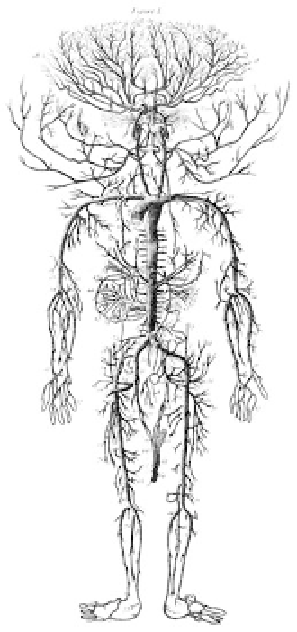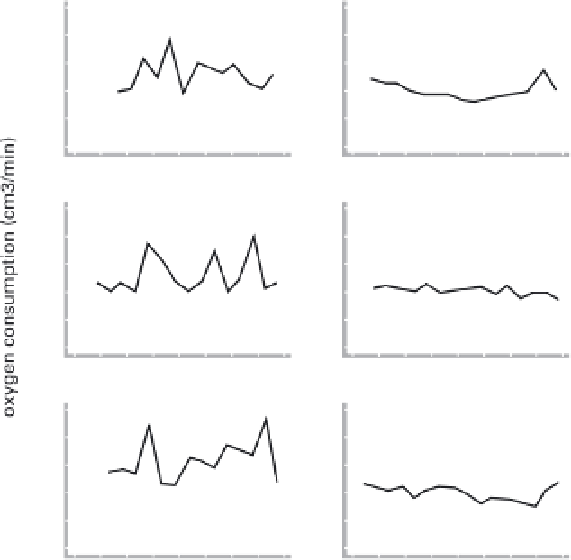Environmental Engineering Reference
In-Depth Information
5.6 (a) Human blood circulation system (Diderot and
D'Alembert 1751-1772). (b) Adaptive vasoconstriction of
Australian Aborigines (based on Scholander et al. 1958).
becoming sufficiently obese, to boost BMR in order to
generate more heat, to cut conductance through vaso-
constriction, or to create a portable microenvironment.
The first adaptation is not an option for an originally
tropical, long-limbed, upright runner even if the food to
sustain it were available; pigs and seals have mastered the
adaptation.
Different BMRs (highest in Northern Europe and
among native North Americans) confirm the usefulness
of the second approach. Complexity and adaptability of
the human circulatory system offers some remarkable
opportunities for heat-saving vasoconstriction (fig. 5.6).
Its efficacy was first documented in the Australian Abo-
rigines (Scholander et al. 1958). They, as well as white
Australians, slept in the open in sleeping bags as the over-
night lows dropped to 0
C. The whites Australians had
recurrent erratic elevations of metabolic rate (up to more
than twice BMR) associated with periods of restlessness
and shivering, but the Aborigines slept undisturbed, their
metabolism steady (fig. 5.6), in some cases even below












































